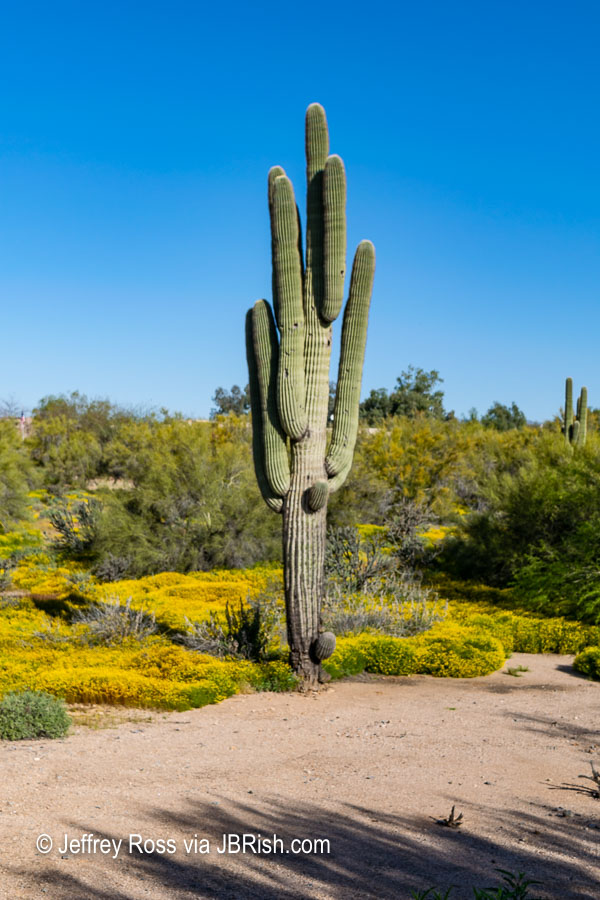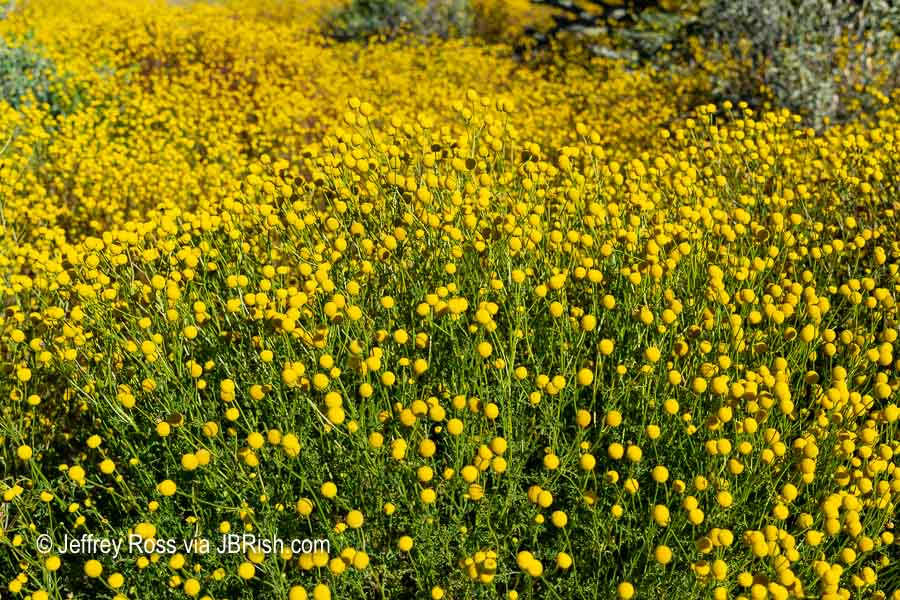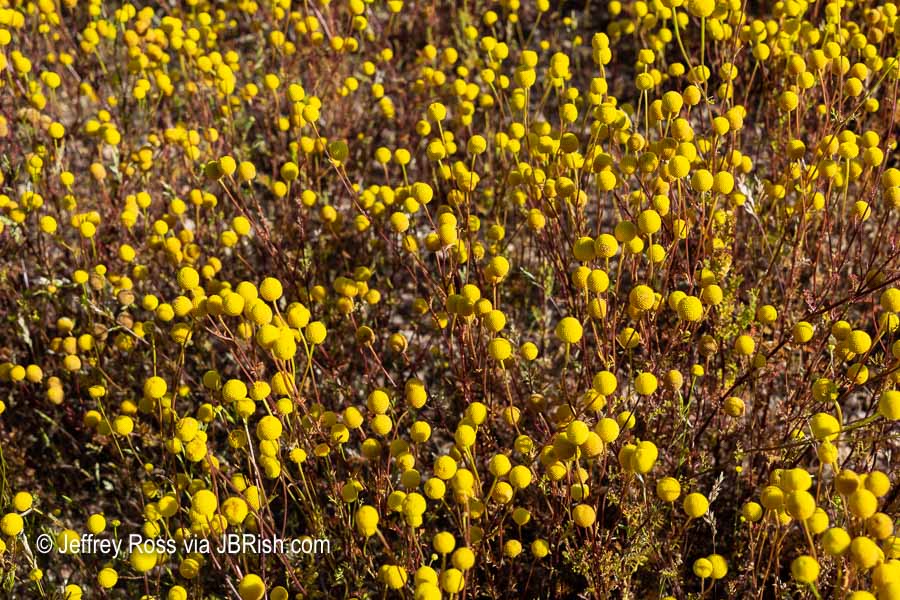It all began when I started some seeds indoors in February. I nursed these seedlings as though they were my only charge and when they had sprouted and showed some green, I put them out during the day and took them in at night.
One day, upon inspection, I noticed that three of the four seedlings had been eaten. I have seen birds do this so I simply chalked it up to my feathered “friends.”
Additionally, I take an almost daily inventory of plants growing in our desert garden areas. The tipping point in the desert is very narrow and a plant can go into stress and die within a day under the right conditions. There is little room for error when temperatures rise to near 110 or when the daily low is 92.
It is currently the spring in the desert, but temperatures during the day would be representative of summer temperatures elsewhere. On the day I am writing this, the temperature was 86 degrees at 1:00 PM. Several days ago, while making the rounds in our courtyard, I noticed that the leaves on our hibiscus had been decimated.
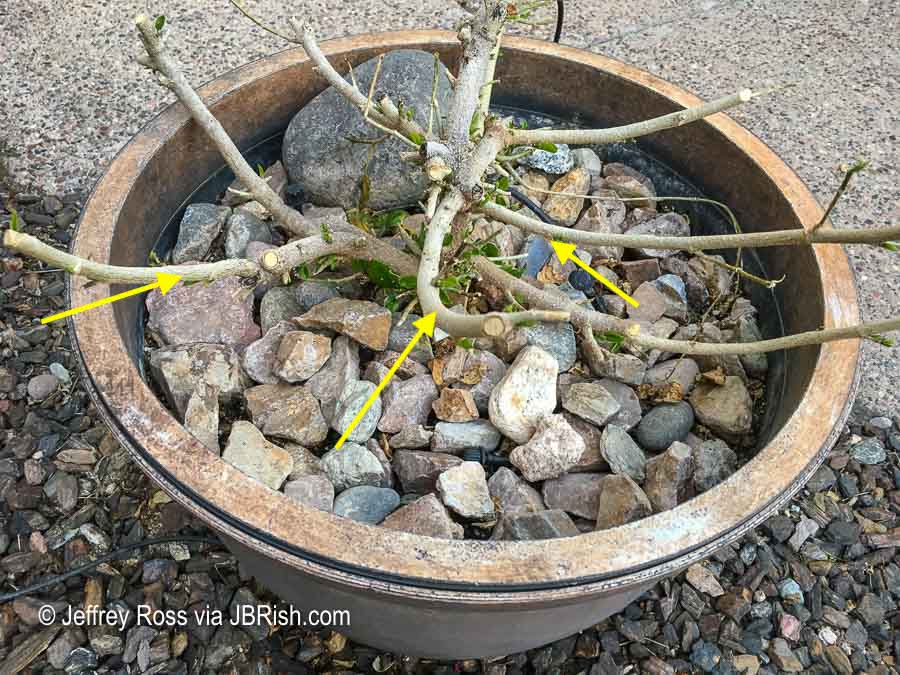
To be sure, the plant had been cut back to stimulate new growth after our winter, but all of the branches had leaves on them and now they were almost denuded. This led me to investigate further.
This gazania in the planter below had blooms on it which apparently were a favorite for the critter who had scaled our courtyard walls to gain a free meal. You may also notice that the right side of the plant has leaves that were trampled and eaten (see arrows).

It is even more obvious in the middle of this geranium and alyssum arrangement. The leaves in the middle were matted (see arrows). If you know geraniums, they have a pungent smell and this may have saved it for extensive damage. This was not the work of birds!
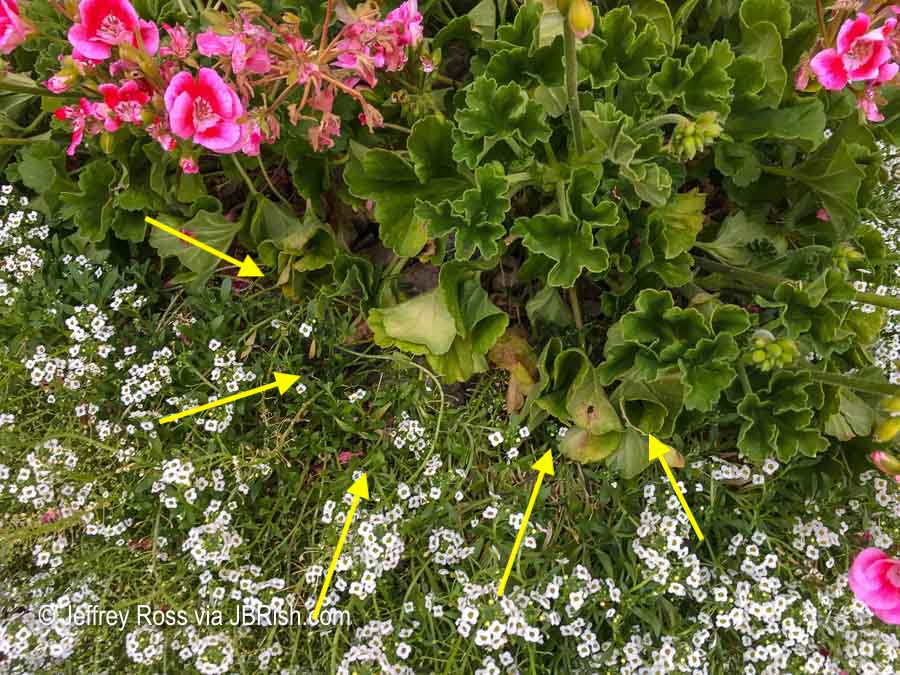
We weren’t sure exactly which animal was doing this, but we were determined to stop the devastation. We own a Havahart trap that we put into action. For two days we had no results. We used peanuts and peanut butter. On the third evening, I was going outside to refresh the bait and look what we found…
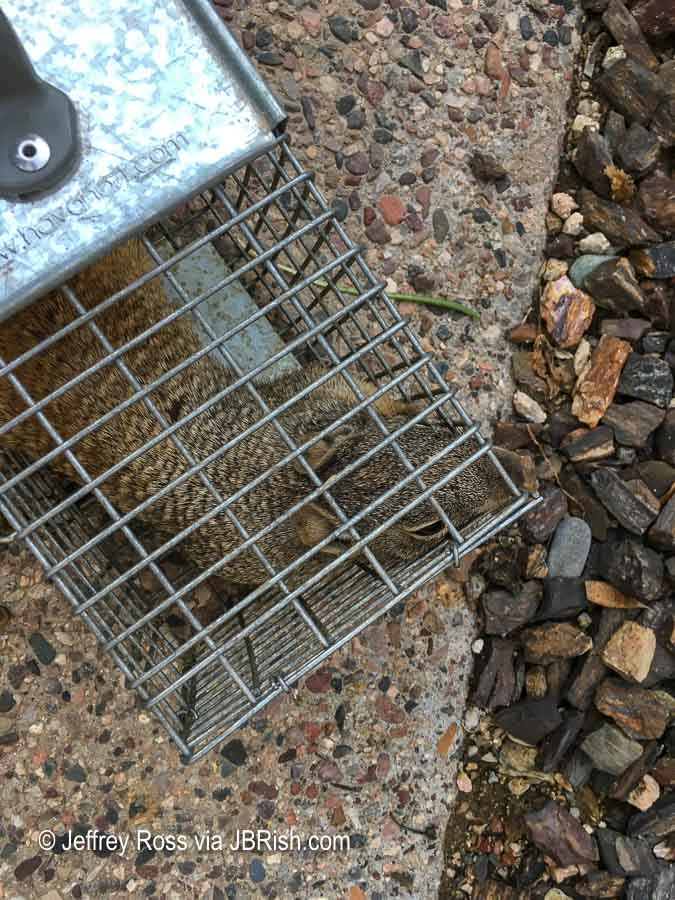
A bushy-tailed squirrel! I have been told that these are not native to the Sonoran Desert and they are quite large.
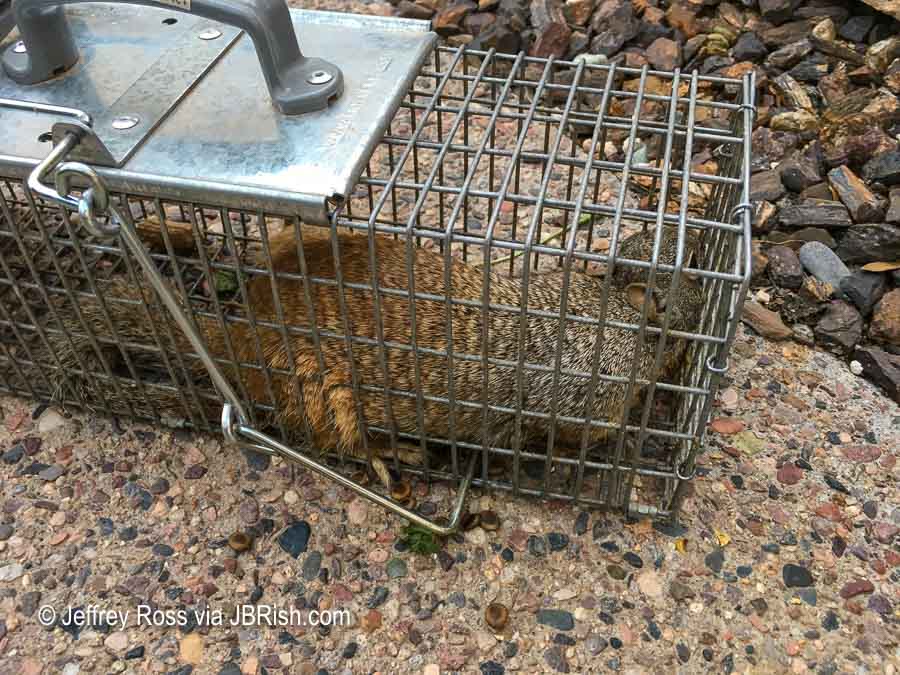
He didn’t like being caught and was trying to bite his way out; but not this time!
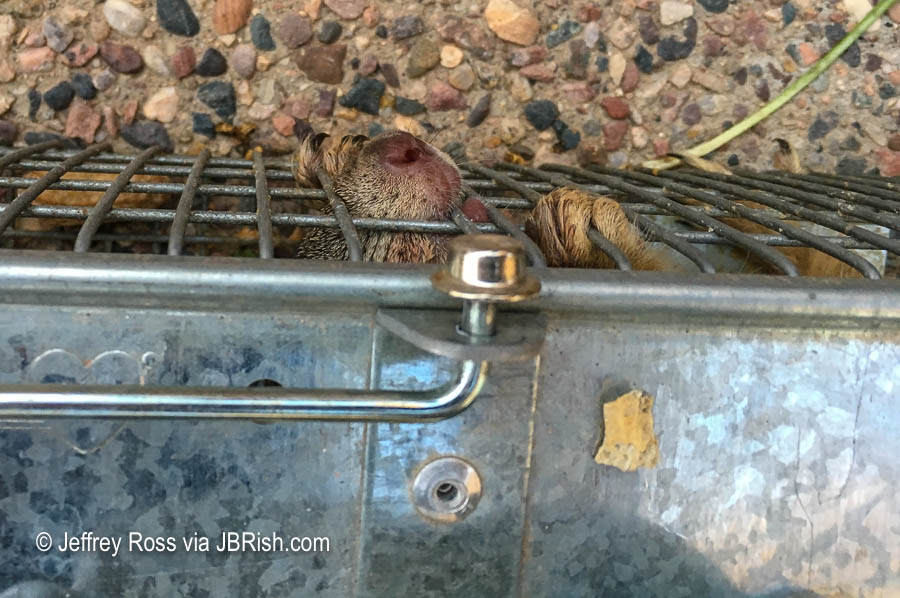
We have a plastic box with a top that we use to transport our Havahart critters and in he went, trap and all! We put paper on the bottom for hygiene reasons.
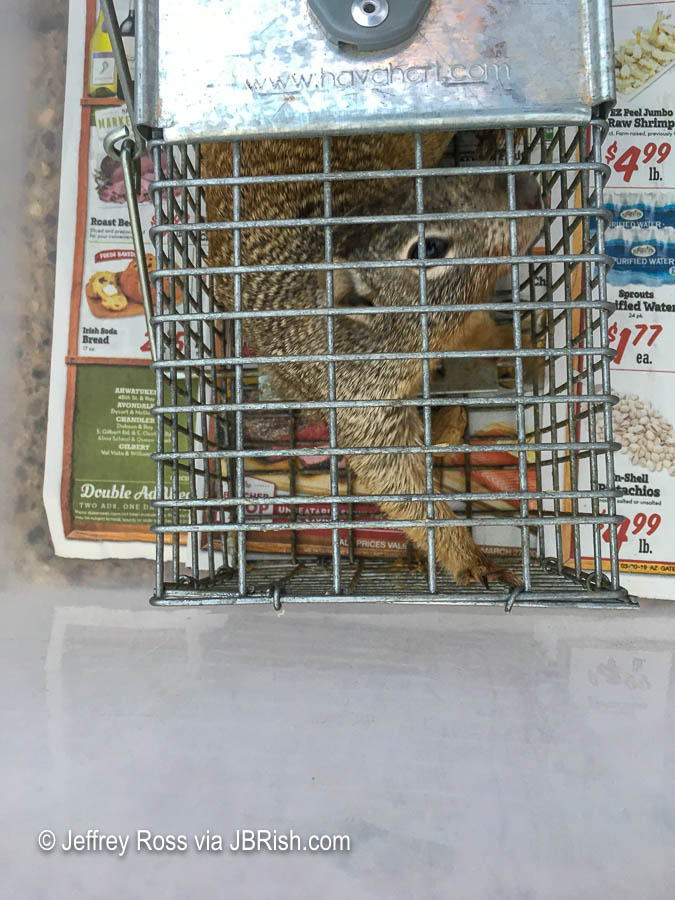
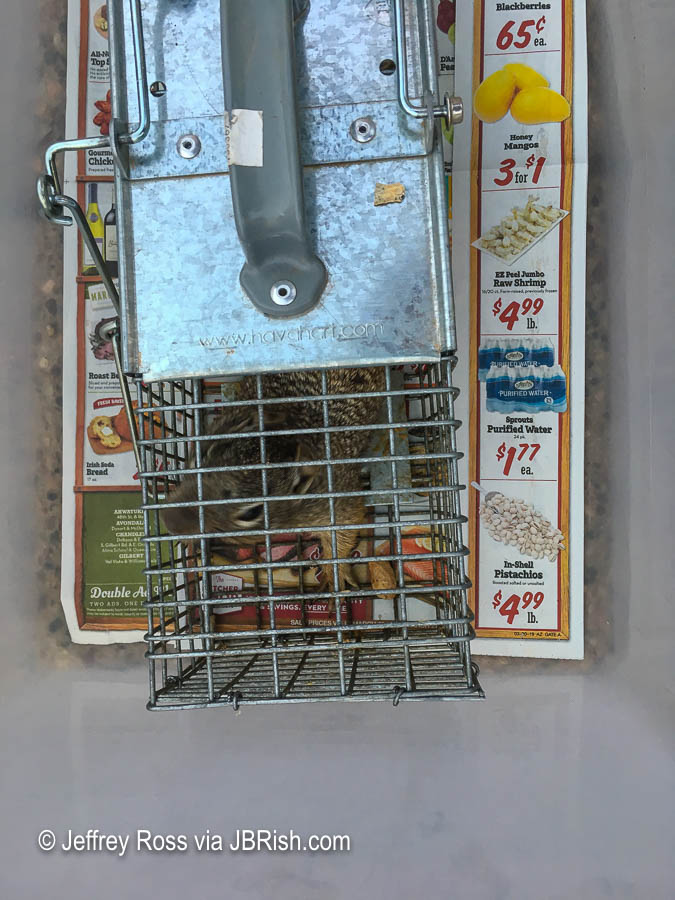
Of course this is stressful for the animal as can be seen by all the droppings it left behind. Interestingly enough, there is a piece of corn that he must have had in his pouch as we have no kernels on our premises.
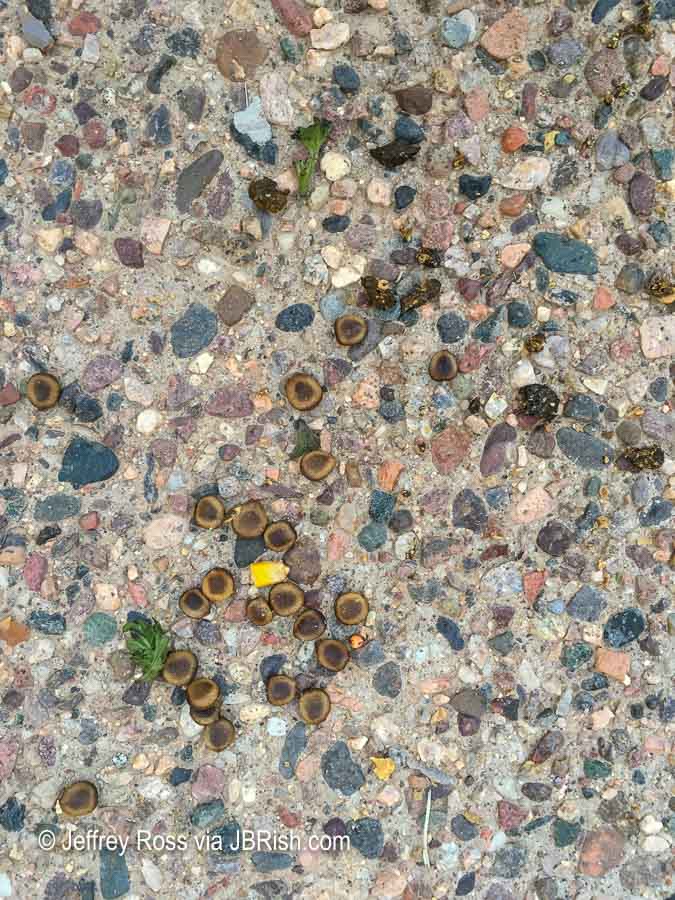
Once the top is secure, into the back of our SUV it goes!

This is a field several miles from our house. We are hopeful that the squirrel will live and we like the idea that we are giving it a chance.
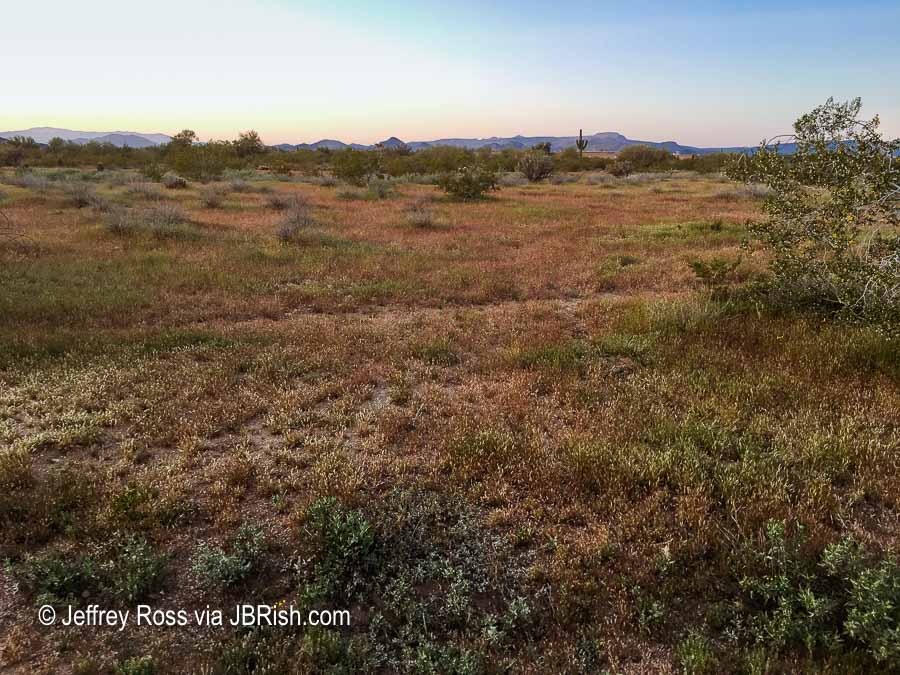
Here he is just before release.
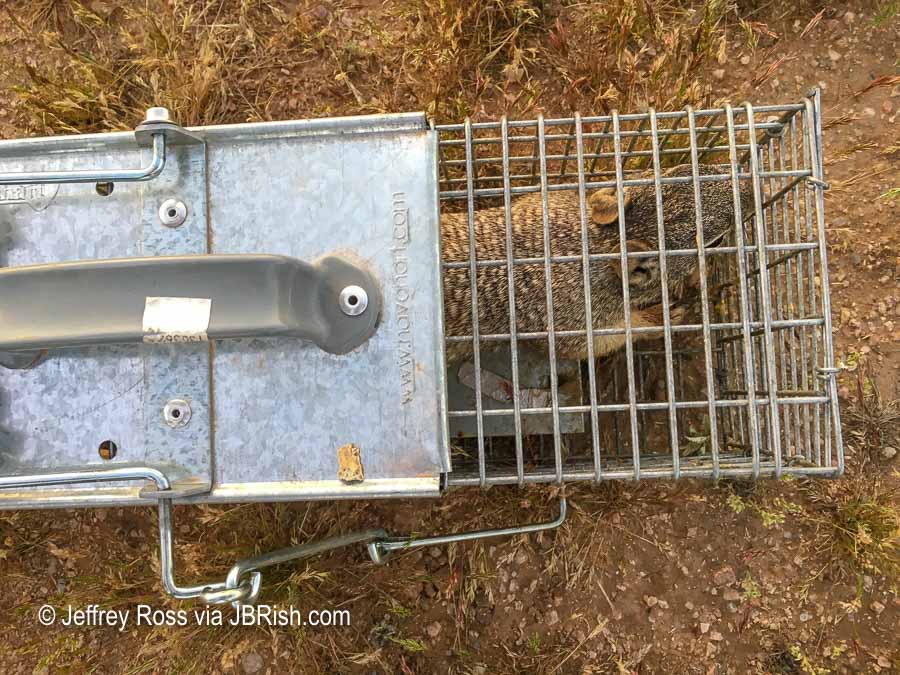
To keep my seedlings safe, I now cover them with our sifting grate.
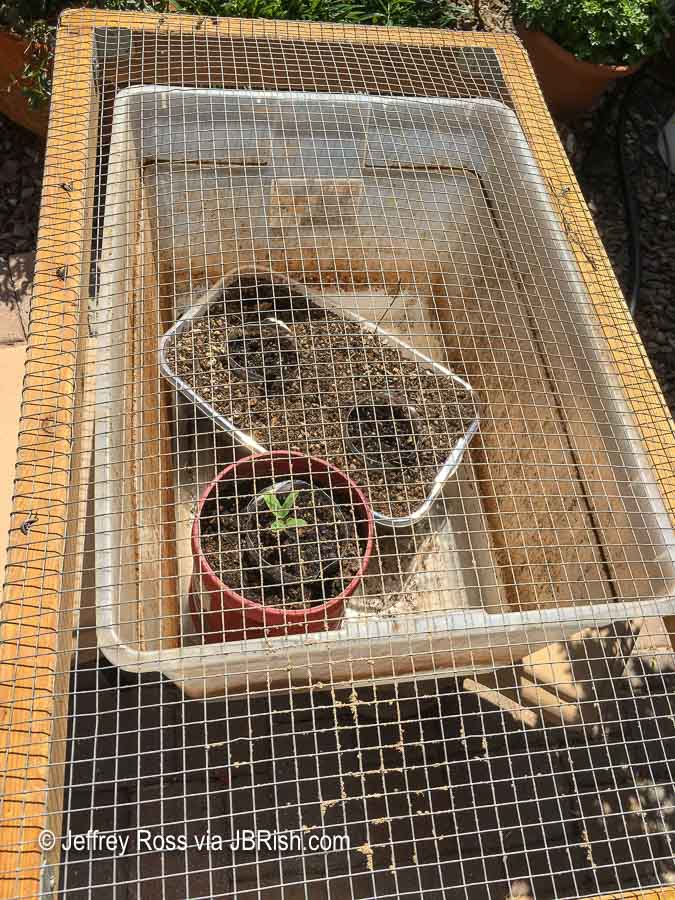
I know we are not done with the critters in our courtyard. The area is fenced in, but these creatures are fighting for survival while we are just growing plants to look at. Nevertheless, we try to keep our plants safe and healthy.
You can read about how we use our sifting grate HERE.
See another type of critter with which we have to contend in our garden – HERE
Read more gardening posts HERE
**********
All original content on this blog is copyrighted by Jeffrey B. Ross with ALL Rights Reserved. While reference links back to JBRish.com are appreciated and encouraged, please acquire approval for any reproduction of original content from this website.
©Jeffrey B. Ross 2014 – 2019 – JBRish.com
